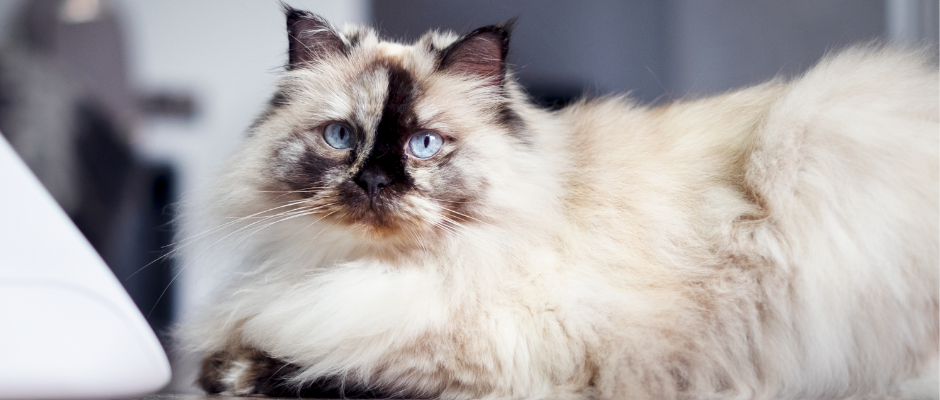See the latest results from the 2021 Sure Petcare US Veterinarian Feline Health Survey
Sure Petcare US Veterinarian Survey Results: Why Monitoring Your Cat’s Drinking Matters1
Just like us, cats need to drink a certain amount of water each and every day to stay healthy. And while staying on top of your cat’s water consumption can be a bit difficult, have you ever thought about how this lack of insight might affect your veterinarian’s ability to provide the best possible care?
To learn more about whether veterinarians are getting the information they need from pet owners, 64 veterinarians were surveyed between March and May of 2021. A total of 11 questions were asked on a variety of topics related to cat wellness, including how much water a cat should be drinking and the type and amount of information received from cat owners during a consultation.
So…what were the key findings from the survey?
Survey Says: Changes in Water Consumption Is One of the Greatest Concerns in Middle-Aged & Senior Cats
The survey asked veterinarians which of the following signs would be of greatest concern in young, middle-aged, and senior cats:
- Change in behavior
- Change in water consumption
- Change in urination/defecation (such as frequency or location)
- Change in food consumption
- Change in activity level
- Change in sleep pattern
According to veterinarians, the most concerning overall health indicator in senior and middle-aged cats of the options presented, was a change in water consumption. This is further highlighted by 75% of veterinarians ranking water consumption as the top concern among senior cats. In middle aged cats alone, a change in urination/ defecation and water consumption tied for top rank. In young cats, veterinarian respondents ranked changes in urination/defecation as the most concerning health indicator. These changes can be a sign that your cat isn’t drinking the right amount of water.
The reason veterinarians are so concerned about changes in drinking behavior is that hydration-related illnesses like diabetes and kidney disease are so common in middle aged and older cats. In fact, chronic kidney disease affects as many as 35% of older cats, according to the Merck Veterinary Manual.
The issue? Most pet owners don’t have a way of knowing how much water their cat is drinking, which leads us to the next key data point.
Survey Says: Veterinarians Aren’t Getting the Information They Need
The information and data a pet owner shares during a consultation has a big impact on the care veterinarians are able to provide, but unfortunately, veterinarians aren’t always privy to that key information.
In fact, 48% of veterinarians agreed it was difficult to get reliable information from cat owners to support accurate diagnoses while 50% agreed that of the data provided by cat owners, they did not believe it was reliable.
Veterinarians also shared the variety of methods by which patients share this information, such as verbally or via electronic files. However, the majority of veterinarians surveyed still didn’t believe these to be accurate sources.
Applying Data to Improve Your Cat’s Care
As shown above, there’s lots of lessons to be learned when it comes to the importance of monitoring a cat’s water consumption and sharing that information with a veterinarian. By bringing awareness to this gap in care, we can better adapt and find ways to spot changes in drinking behavior more easily to ensure that our feline family members stay healthy and receive the best possible veterinary care.
1 Data on file
![<?php echo $store[store_name]; ?> flag](https://media.surepetcare.com/website/images/homepage_tiles/shopping-cart.png)



